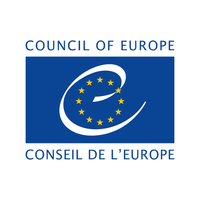New EU Report on Cultural Heritage Digitisation, Accessibility and Preservation
 The European Commission has recently published a report entitled "Cultural Heritage: Digitisation, Online Accessibility and Digital Preservation". This report reviews and assesses the overall actions and progress achieved in the European Union in implementing the Recommendation (2011/711/EU) which is one of the main EU policy instruments on digitisation, online access and digital preservation of cultural heritage material.
The European Commission has recently published a report entitled "Cultural Heritage: Digitisation, Online Accessibility and Digital Preservation". This report reviews and assesses the overall actions and progress achieved in the European Union in implementing the Recommendation (2011/711/EU) which is one of the main EU policy instruments on digitisation, online access and digital preservation of cultural heritage material.
Objectives of the report
The objective of the report is to monitor and track the implementation progress in each Member State in the five areas addressed by the Recommendation (2011/711/EU), which takes a holistic approach to the digital lifecycle of cultural heritage. A secondary objective of this report is to provide a comprehensive overview of Member States' strategies and policies on digitisation of cultural heritage; to highlight best practices and opportunities for economies of scale; and to serve possible synergies with initiatives at the EU level, including the implementation of the Declaration of cooperation on advancing digitisation of cultural heritage signed at the Digital Day 2019. In the Foreword of the report, Mariya Gabriel, European Commissioner for Digital Economy and Society drew attention to the importance of Europe’s cultural heritage and use of digital, saying:Europe’s galleries, libraries, archives, museums and audiovisual archives have vast and rich collections that represent Europe’s cultural diversity but also our shared history and values. We have a lot to cherish, share and safeguard. That is why the Commission monitors progress in terms of digitisation, online access and digital preservation through the implementation of the Recommendation (2011/711/EU).
Some highlights
While library and archival materials remain the priority group of cultural resources for digitisation, followed by museum collections, and sound and audiovisual heritage, Member States have also begun to digitise on a larger scale immovable cultural heritage, signalling a possible rising emphasis: more than 1/3 of Member States reported funding programmes for digitisation of monuments, historical buildings and archaeological sites. In this context, 3D digitisation has also seen increased activity. Immovable cultural heritage such as monuments, historical buildings and archaeological sites are particularly vulnerable to threats difficult to predict or prevent. The recent fire at Notre Dame that broke out on 15 April 2019 served as a reminder of this fact. Threats such as accidental damage, as well as natural disasters, pollution, mass tourism and erosion due to exposure over time can put Europe’s historical sites at risk. In this context, it is an important new trend to highlight that eleven Member States reported funding programmes for digitisation of immovable cultural heritage, four of which reported 3D digitisation in particular. This new trend not only signals that Member States are increasingly working to make the most of digital technologies to record, document and preserve Europe’s cultural heritage and make it available online, but that immovable cultural heritage is an important part of Europe’s cultural resources that requires national and EU level attention.Further information
The report "Cultural Heritage: Digitisation, Online Accessibility and Digital Preservation" is available as a free download from https://ec.europa.eu/digital-single-market/en/news/european-commission-report-cultural-heritage-digitisation-online-accessibility-and-digitalSimilar content
posted on
03 Mar 2013
posted on
03 Jul 2011
posted on
22 Jul 2012
posted on
02 May 2012




